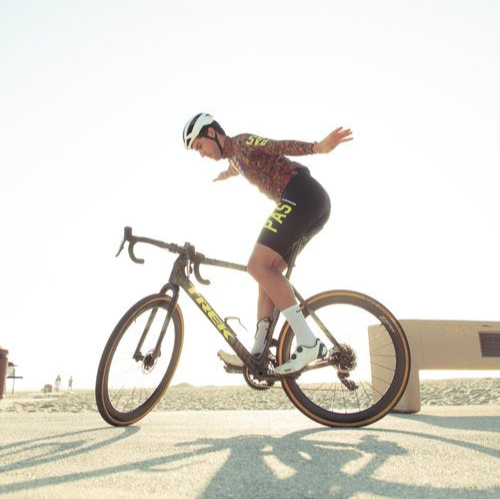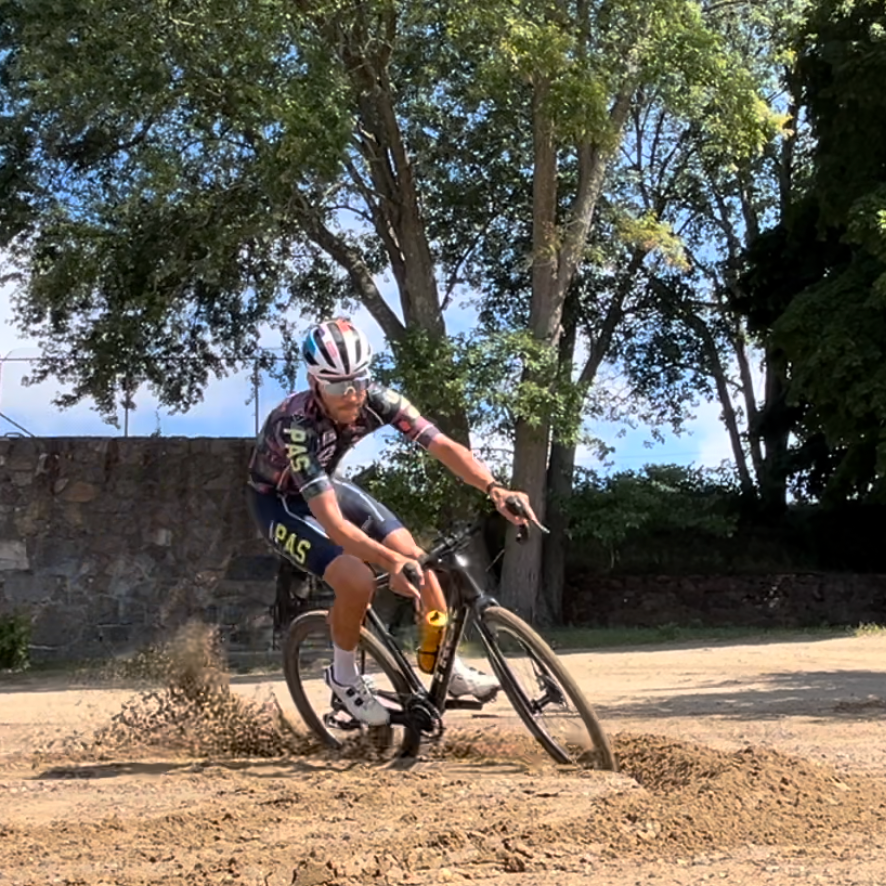August 31st, 2024 | by Curtis White
Today on Quench'd our guest is Curtis White, a professional cyclocross racer. Curtis is a national champion, a Pan-Am Continental Champion, has been a member of eleven World Championship teams, and has over 40 professional victories to his name. Curtis summed up his relationship with cyclocross perfectly when he told us "Cyclocross has been my passion throughout my entire career, it's what I feel my body is build tor. I live for 'cross."
A professional athlete needs to master the art of training and being data driven with trusting your body to respond and igniting your instincts. In a data driven world, this balancing act can be difficult. There are many days that you have to complete certain intervals, do workouts that you don’t always enjoy, get in the right number of carbs, or execute your recovery routine. That’s the part of training that is “work,” but it’s important to also incorporate “play” into your training. What helps keep this balance is community. Within a community athletes train harder, learn more and progress faster, community helps keep the balance of training and loving what you do alive.
Today on Quench'd our guest is Curtis White, a professional cyclocross racer. Curtis is a national champion, a Pan-Am Continental Champion, has been a member of eleven World Championship teams, and has over 40 professional victories to his name. Curtis summed up his relationship with cyclocross perfectly when he told us "Cyclocross has been my passion throughout my entire career, it's what I feel my body is build tor. I live for 'cross."
A professional athlete needs to master the art of training and being data driven with trusting your body to respond and igniting your instincts. In a data driven world, this balancing act can be difficult. There are many days that you have to complete certain intervals, do workouts that you don’t always enjoy, get in the right number of carbs, or execute your recovery routine. That’s the part of training that is “work,” but it’s important to also incorporate “play” into your training. What helps keep this balance is community. Within a community athletes train harder, learn more and progress faster, community helps keep the balance of training and loving what you do alive.
Thank you Curtis for all the images!
Thank you Curtis for all the images!
What does a normal cyclocross training session look like? Picture yourself in a park or in the woods on a flowing singletrack with a group of other riders. There are no phones, no airpods, no distractions. Just the crunch of the leaves, the dirt moving under the tires, and following the wheel in front of you. After establishing a lap, your only thought is navigating dismounts, remounts, barriers, run-ups, ruts, sprints, cornering, bunny-hops, any other features you can imagine. Typically, after a warm up period, we dive into 30 minutes of tempo where the group plays “follow the leader” or does reverse passing drills (where each rider, once they are last wheel in the group, passes their way to the front of the group and slowly drifts back until it’s their time to pass again).
Once everyone has the chance to find their flow and confidence on the course, it is time to move into shorter and more explosive efforts. Sometimes we break into smaller groups and do five minute mock races, sometimes the efforts are 90 seconds. The goal is to reach a high intensity in a repeatable format. Oftentimes, the end of the session is the most explosive and fun, where we gather for start practice or hill sprints. Neither sounds fun independently, but with the group dynamic of friendly competition, we are able to push more and laugh at our mistakes.
What does a normal cyclocross training session look like? Picture yourself in a park or in the woods on a flowing singletrack with a group of other riders. There are no phones, no airpods, no distractions. Just the crunch of the leaves, the dirt moving under the tires, and following the wheel in front of you. After establishing a lap, your only thought is navigating dismounts, remounts, barriers, run-ups, ruts, sprints, cornering, bunny-hops, any other features you can imagine. Typically, after a warm up period, we dive into 30 minutes of tempo where the group plays “follow the leader” or does reverse passing drills (where each rider, once they are last wheel in the group, passes their way to the front of the group and slowly drifts back until it’s their time to pass again).
Once everyone has the chance to find their flow and confidence on the course, it is time to move into shorter and more explosive efforts. Sometimes we break into smaller groups and do five minute mock races, sometimes the efforts are 90 seconds. The goal is to reach a high intensity in a repeatable format. Oftentimes, the end of the session is the most explosive and fun, where we gather for start practice or hill sprints. Neither sounds fun independently, but with the group dynamic of friendly competition, we are able to push more and laugh at our mistakes.
All In all, cyclocross training is a low stress session where we try to make our skills sharper, get in the intensity to prepare for our goals while being in an environment where we are not afraid to fail, and feel connected to the nature around us. Removing that fear of failure and relying on a community is not only what makes cyclocross unique as a sport, but it also elevates athletes to a higher level and instills confidence.
All In all, cyclocross training is a low stress session where we try to make our skills sharper, get in the intensity to prepare for our goals while being in an environment where we are not afraid to fail, and feel connected to the nature around us. Removing that fear of failure and relying on a community is not only what makes cyclocross unique as a sport, but it also elevates athletes to a higher level and instills confidence.
The team reflects on some of our favorite moments from the past year. Some big, some small, all of which we couldn't have done without you, so thank you! Cheers to the new year :)
For Quench'd this week, professional cyclist Kiara Lylyk doesn't hold back when sharing stories from her time in the Tour de Femmes this past year. Racing at this level is unimaginably hard and Kiara shares with us just how hard it is. Her story is inspiring and had us on the edge of our seats.
At this office, we love nordic skiing and have been eagerly waiting for each race. We asked each of our nordic athletes to tell us a bit about how their season is going and to share some pictures of their experiences abroad racing for the US! Read what they had to say.


